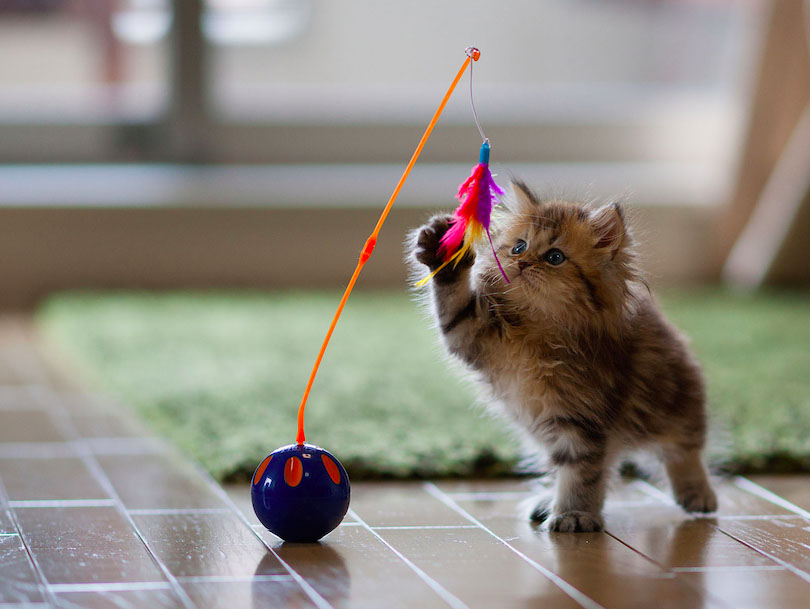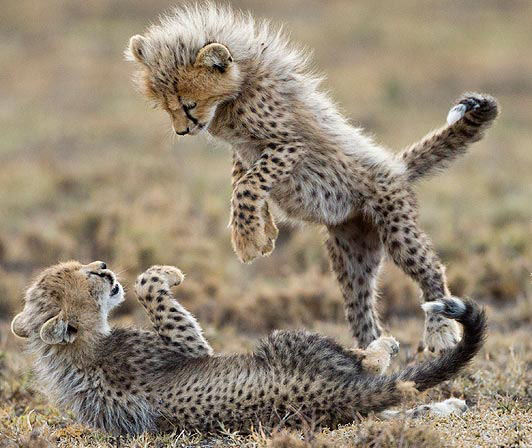Animal Play
Jocelyn Hansson
Biology 342 Fall 2015
What is Animal Play?
 |
| Figure 1. Two brown bears playing. Photo by Ron Biebrugge. SOURCE. |
Animal play is a widespread phenomenon throughout the animal kingdom. Originally, it was thought that only endothermic vertebrate animals exhibited play, but recently animal play has been found outside these categories. Due to it's significant costs and widespread nature, play is usually considered to be an adaptive behavioral phenomenon. Despite this, no particular single benefit or function has been agreed upon. Instead, play most likely has several overlapping functions. Additionally, play is thought to have evolved independently in many lineages, further allowing different functions in different species.
Types of Play:
 |
 |
 |
| FIgure 2. Baby bison jumping. SOURCE. | Figure 3. Kitten playing with a toy. SOURCE. | Figure 4. Cheetah cubs play fighting. Photo by Paul Souders. SOURCE. |
Locomotor-Rotational Play
Locomotor-rotational play is play in which an animal exhibits sustained or intense physical movements without clear reason. This behavior is usually solitary, and can entail running, jumping, or prancing. This category also includes movements in which the individual doesn't move distances so much as move parts of their own body via rotational movements, such as shakes or twists of the body.
Object Play
Object play entails an animal interacting with an object. This behavior can either be solitary or social. Much object play mimics predatory behavior, involving stalking or attacking motions. As one might expect, this type of play is particularly prevalent in predatory and scavenging animals.
Social Play
Social play involves the interaction of two animals with one another. Almost all social play occurs between conspecifics. One of the most common types of social play is play fighting, which mimics real fights, but lacks the level of aggression.
Play Criteria:
The most commonly held definition of play comes from Gordon M. Burghardt, who lists 5 criteria. The first criterion specifies that play does not have a complete function in its context. Play may have some current function, such as physical benefits, or arousal, but it also contains non-functional elements. The second criterion states that play is somewhat intrinsically motivated; it is intentional and somewhat rewarding or reinforcing. The third criterion requires that play differs from serious behavior. Oftentimes play mimics more serious behavior, but play has to differ by some modification. Modifications include incompleteness, exaggeration, or other formal differences. The fourth criterion specifies that while play is often repetitious, it is not stereotyped. This criteria prevents unusual behavior that has unknown functions to be specified as play. The final criterion states that play occurs when an animal is unstressed. This rule helps to make sure that play is voluntary.